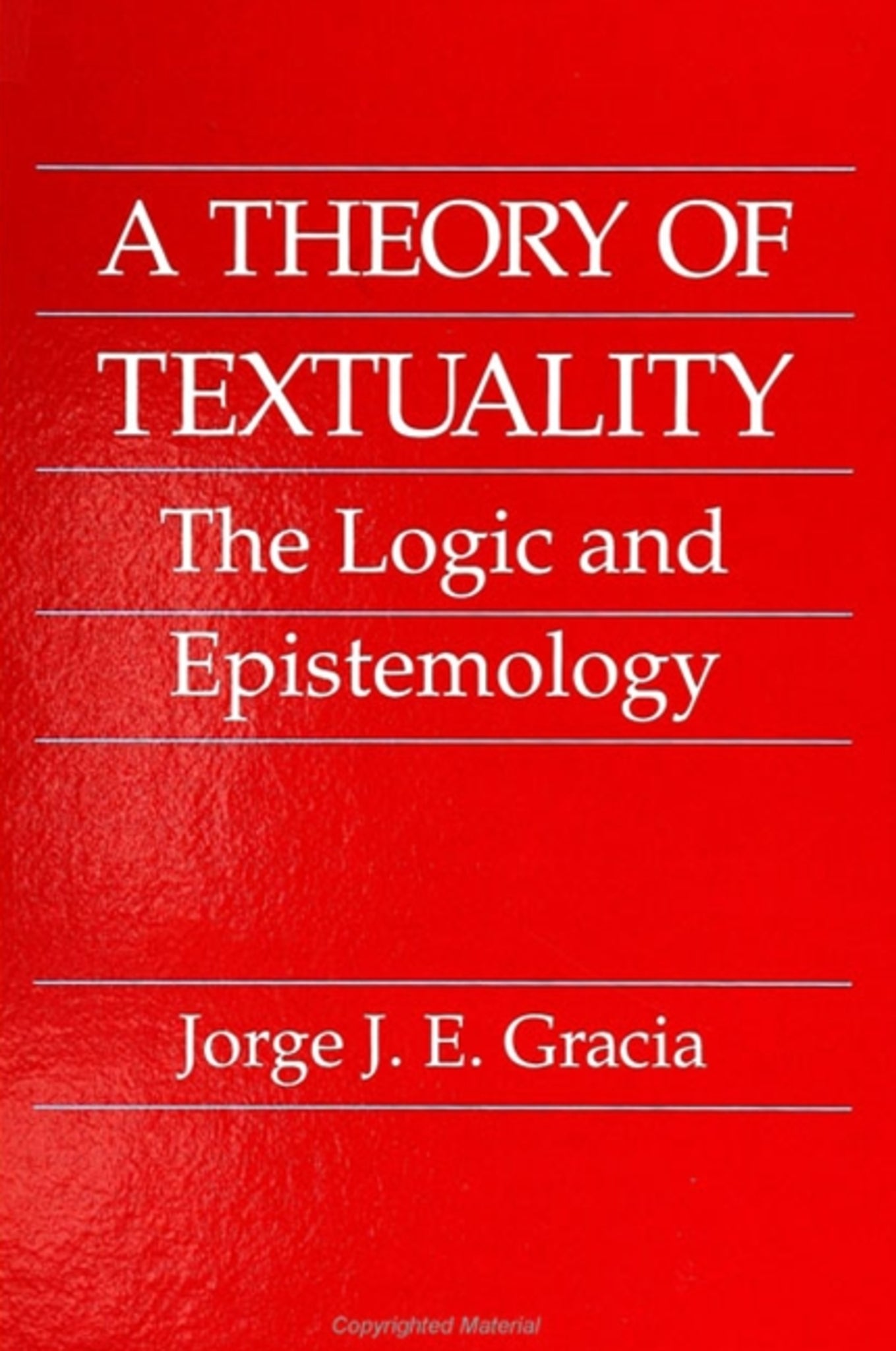We're sorry. An error has occurred
Please cancel or retry.
A Theory of Textuality

Some error occured while loading the Quick View. Please close the Quick View and try reloading the page.
Couldn't load pickup availability
- Format:
-
01 July 1995

This book is just what it says it is: A theory of textuality divided into two parts, logical and epistemological.
This is the first comprehensive and systematic theory of textuality that takes into account the relevant views of both analytic and Continental thinkers and also of major historical figures. The author shows that most of the confusion surrounding textuality is the result of three factors: a too-narrow understanding of the category; a lack of a proper distinction among logical, epistemological, and metaphysical issues; and a lack of proper grounding of epistemological and metaphysical questions on logic analyses.
The author begins with a logical analysis of the notion of text resulting in a definition that serves as the basis for the distinctions he subsequently draws between texts on the one hand and language, artifacts, and art objects on the other; and for the classification of texts according to their modality and function. The second part of the book uses the conclusions of the first part to solve the various epistemological issues which have been raised about texts by philosophers of language, semioticians, hermeneuticists, literary critics, semanticists, aestheticians, and historiographers.


"Gracia shows in a very detailed manner, that it is now time for questions related to the status of texts (ontological status, metaphysical status, logical status, and epistemological status) to be taken as equally important to classic strands of analytic philosophy as these questions have been to more recent strands of Continental philosophy and literary criticism." — Gayle L. Ormiston, Kent State University
"I don't know any other book like it. Gracia introduces a philosophical topology for a whole range of problems centered on language and textuality. He is careful in making very useful distinctions that help to cut through a lot of current confusion about interpretation." — Rudolf A. Makkreel, Emory University
Preface
Introduction: The Issues
I. General Character of the Issues
II. Overall Outline
A. The Logic of Texts
B. The Epistemology of Texts
Part I. The Logic of Texts
1. Intension
I. Elements in the Definition of Texts
A. Entities that Constitute Texts (ECTs)
B. Signs
C. Specific Meaning
D. Intention
E. Selection and Arrangement
F. Context
II. Conventionality of Texts
III. Conclusion
2. Extension
I. Texts and Language
II. Texts and Artifacts
III. Texts and Art Objects
IV. Texts and Works
V. Conclusion
3.Taxonomy
I. Modal Classification
A. Actual Text
1. Historical Text
2. Contemporary Text
3. Intermediary Text
B. Intended Text
C. Ideal Text
II. Functional Classification
A. Linguistic Functions
1. Informative Texts
2. Directive Texts
3. Expressive Texts
4. Evaluative Texts
5. Performative Texts
B. Cultural Functions
1. Legal Texts
2. Literary Texts
3. Philosophical Texts
4. Scientific Texts
5. Religious Texts
6. Historical Texts
7. Political Texts
8. Pedagogical Texts
9. Confessional Texts
10. Entertaining Texts
11. Inspirational Texts
12. Pneumonic Texts
13. Other Functional Categories of Texts
III. Conclusion
Part II. The Epistemology of Texts
4. Understanding
I. Understanding versus Meaning
II. Number of Understandings
III. Understanding and Textual Identity
IV. Limits of Understanding
A. Limits of Meaning
1. Essential and Accidental Differences in Meaning
2. Meaning and the Implications of Meaning
3. Meaning and Intentions
B. Factors that Establish the Limits of Meaning
1. Author
2. Audience
3. Context
4. Society
5. Language
6. Text
7. Cultural Function
C. Limits of Textual Understanding
D. Legitimacy of Understanding Texts Differently than their Historical Authors
V. Truth Value and Objectivity of Understanding
VI. Conclusion
5. Interpretation
I. Nature and Ontological Status of Interpretations
II. Interpreter's Dilemma and Function of Interpretations
A. Historical Function
B. Meaning Function
C. Implicative Function
III. Types of Interpretations: Textual vs. Nontextual
IV. Number, Truth Value, and Objectivity of Interpretations
A. Of Textual Interpretations
1. Number
2. Truth Value
3. Objectivity and Subjectivity
B. Of Nontextual Interpretations
V. Understanding, Meaning, and Interpretation of Interpretations
VI. Conclusion
6. Discernibility
I. How Do I Know that Something Is a Text?
II. How Do I Learn the Meaning of a Text?
III. How Can I Be Certain that I Know the Meaning of a Text?
A. Expected Behavior and Certainty in Textual Understanding
B.Objections
C. The Role of Tradition in the Discernibility of Texts
IV. Conclusion
Conclusion: A Theory of Texuality — Logic and Epistemology
Notes
Select Bibliography
Index of Authors
Index of Subjects



